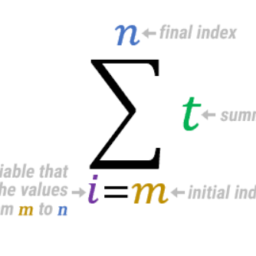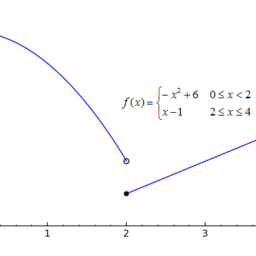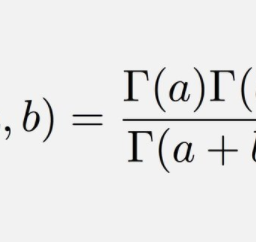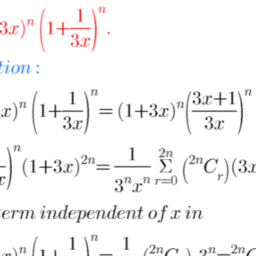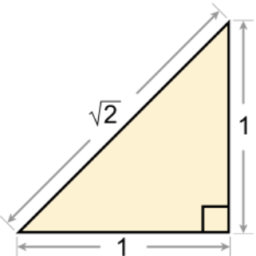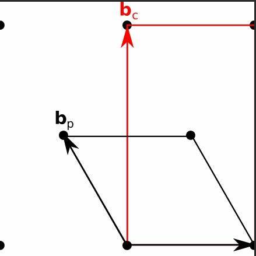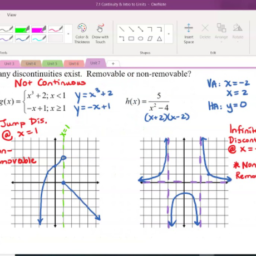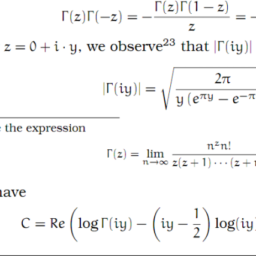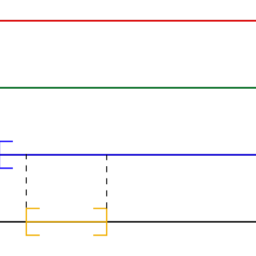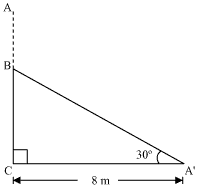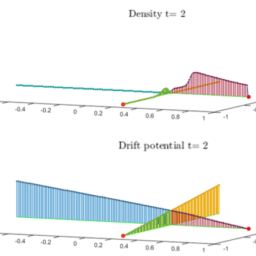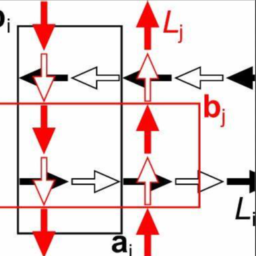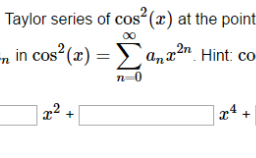$7.5$ Finding the Derivative
Obviously there need to be simple ways of finding the derivative when it exists. There are rules of derivatives which make finding the derivative very easy. In the following theorem, the derivative could refer to right or left derivatives as well as regular derivatives.
Theorem 7.5.1 Let a,b be numbers and suppose $f^{\prime}(t)$ and $g^{\prime}(t)$ exist. Then the following formulas are obtained.
$$
\begin{gathered}
(a f+b g)^{\prime}(t)=a f^{\prime}(t)+b g^{\prime}(t) . \
(f g)^{\prime}(t)=f^{\prime}(t) g(t)+f(t) g^{\prime}(t) .
\end{gathered}
$$
The formula, $7.15$ is referred to as the product rule.
If $f^{\prime}(g(t))$ exists and $g^{\prime}(t)$ exists, then $(f \circ g)^{\prime}(t)$ also exists and
$$
(f \circ g)^{\prime}(t)=f^{\prime}(g(t)) g^{\prime}(t) \text {. }
$$
This is called the chain rule. In this rule, for the sake of simiplicity, assume the derivatives are real derivatives, not derivatives from the right or the left. If $f(t)=t^{n}$ where $n$ is any integer, then
$$ f^{\prime}(t)=n t^{n-1} $$ Also, whenever $f^{\prime}(t)$ exists, $$ \begin{array}{l}\text { where this definition can be adjusted in the case where the derivative is a right } \ \text { derivative by letting } h>0 \text { or } h<0 \text { only and considering a one sided limit. } \\ \text { equivalent to } \\ \qquad f^{\prime}(t)=\lim _{s \rightarrow t} \frac{f(s)-f(t)}{t-s}\end{array} $$ where this definition can be adjusted in the case where the derivative is a right or left derivative by letting $h>0$ or $h<0$ only and considering a one sided limit. This is equivalent to
136 $\begin{aligned} \text { Proof: }[7.14] \text { is left for you. Consider } \mathbf{7 . 1 5} & \text { CHAPTER } 7 . \text { THE DERIVATIVE } \ f g(t+h)-f g(t)=& f(t+h) g(t+h)-f(t) g(t+h)+f(t) g(t+h)-f(t) g(t) \=& g(t+h)(f(t+h)-f(t))+f(t)(g(t+h)-g(t)) \=& g(t+h)\left(f^{\prime}(t) h+o(h)\right)+f(t)\left(g^{\prime}(t) h+o(h)\right) \=& g(t) f^{\prime}(t) h+f(t) g^{\prime}(t) h+f(t) o(h) \ &+(g(t+h)-g(t)) f^{\prime}(t) h+g(t+h) o(h) \ &=g(t) f^{\prime}(t) h+f(t) g^{\prime}(t) h+o(h) \end{aligned}$
because by Lemma 7.3.6. $g$ is continuous at $t$ and so
$$
(g(t+h)-g(t)) f^{\prime}(t) h=o(h)
$$
While $f(t) o(h)$ and $g(t+h) o(h)$ are both $o(h)$. This proves $7.15$.
Next consider the chain rule. By Lemma 7.3.6 again,
$$
\begin{gathered}
f \circ g(t+h)-f \circ g(t)=f(g(t+h))-f(g(t)) \
=f(g(t)+(g(t+h)-g(t)))-f(g(t)) \
=f^{\prime}(g(t))(g(t+h)-g(t))+o((g(t+h)-g(t))) \
=f^{\prime}(g(t))(g(t+h)-g(t))+o(h)
\end{gathered}
$$
$$
\begin{aligned}
&=f^{\prime}(g(t))\left(g^{\prime}(t) h+o(h)\right)+o(h) \
&=f^{\prime}(g(t)) g^{\prime}(t) h+o(h)
\end{aligned}
$$
This proves the chain rule.
Now consider the claim about $f(t)=t^{n}$ for $n$ an integer. If $n=0,1$ the desired conclusion follows from Lemma 7.4.1. Suppose the claim is true for $n \geq 1$. Then let $f_{n+1}(t)=t^{n+1}=f_{n}(t) t$ where $f_{n}(t) \equiv t^{n}$. Then by the product rule, induction and the validity of the assertion for $n=1$,
$$
f_{n+1}^{\prime}(t)=f_{n}^{\prime}(t) t+f_{n}(t)=t n t^{n-1}+t^{n}=n t^{n+1}
$$
and so the assertion is proved for all $n \geq 0$. Consider now $n=-1$.
$$
\begin{aligned}
(t+h)^{-1}-t^{-1} &=\frac{-1}{t(t+h)} h=\frac{-1}{t^{2}} h+\left(\frac{-1}{t(t+h)}+\frac{1}{t^{2}}\right) h \
&=\frac{-1}{t^{2}} h+\frac{h^{2}}{t^{2}(t+h)}=-\frac{1}{t^{2}} h+o(h)=(-1) t^{-2} h+o(h)
\end{aligned}
$$
Therefore, the assertion is true for $n=-1$. Now consider $f(t)=t^{-n}$ where $n$ is a positive integer. Then $f(t)=\left(t^{n}\right)^{-1}$ and so by the chain rule,
$$
f^{\prime}(t)=(-1)\left(t^{n}\right)^{-2} n t^{n-1}=-n t^{-n-1}
$$
This proves 7.16. Finally, if $f^{\prime}(t)$ exists,
$$
f^{\prime}(t) h+o(h)=f(t+h)-f(t) .
$$
Divide by $h$ and take the limit as $h \rightarrow 0$, either a regular limit or a limit from one side or the other in the case of a right or left derivative.
$$
f^{\prime}(t)=\lim {h \rightarrow 0}\left(\frac{f(t+h)-f(t)}{h}+\frac{o(h)}{h}\right)=\lim {h \rightarrow 0} \frac{f(t+h)-f(t)}{h} .
$$
$(x-2$
137 courses. There is nothing wrong with doing it this way from the beginning for a function of only one variable but it is not the right way to think of the derivative and does not generalize to the case of functions of many variables where the definition given in terms
Corollary $7.5 .2$ Let $f^{\prime}(t), g^{\prime}(t)$ both exist and $g(t) \neq 0$, then the quotient rule
$$
\left(\frac{f}{g}\right)^{\prime}=\frac{f^{\prime}(t) g(t)-f(t) g^{\prime}(t)}{g(t)^{2}}
$$
Proof: This is left to you. Use the chain rule and the product rule.
Higher order derivatives are defined in the usual way. $f^{\prime \prime} \equiv\left(f^{\prime}\right)^{\prime}$ etc. Also the Leibniz notation is defined by
$$
\frac{d y}{d x}=f^{\prime}(x) \text { where } y=f(x)
$$
and the second derivative is denoted as $\frac{d^{2} y}{d x^{2}}$ with various other higher order derivatives defined in the usual way.
The chain rule has a particularly attractive form in Leibniz’s notation. Suppose $y=g(u)$ and $u=f(x)$. Thus $y=g \circ f(x)$. Then from the above theorem
$$
(g \circ f)^{\prime}(x)=g^{\prime}(f(x)) f^{\prime}(x)=g^{\prime}(u) f^{\prime}(x)
$$
or in other words, $\frac{d y}{d x}=\frac{d y}{d u} \frac{d u}{d x}$. Notice how the $d u$ cancels. This particular form is a very useful crutch and is used extensively in applications. Of course the problem is that we really don’t know what $d u$ is. Nevertheless, it is great notation and in fact this can be made precise but this book is on classical analysis.
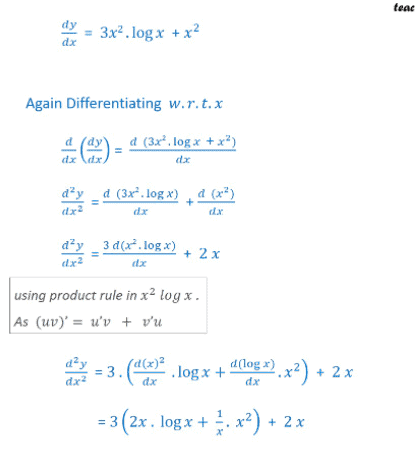
$7.5$ 寻找衍生品
显然,当导数存在时,需要有简单的方法来找到它。有一些导数规则可以很容易地找到导数。在以下定理中,导数可以指右导数或左导数以及正则导数。
定理 7.5.1 设 a,b 为数并假设 $f^{\prime}(t)$ 和 $g^{\prime}(t)$ 存在。然后得到以下公式。
$$
\开始{聚集}
(a f+b g)^{\prime}(t)=a f^{\prime}(t)+b g^{\prime}(t) 。 \
(f g)^{\prime}(t)=f^{\prime}(t) g(t)+f(t) g^{\prime}(t) 。
\结束{聚集}
$$
公式 $7.15$ 称为乘积规则。
如果 $f^{\prime}(g(t))$ 存在且 $g^{\prime}(t)$ 存在,则 $(f \circ g)^{\prime}(t)$ 也存在且
$$
(f \circ g)^{\prime}(t)=f^{\prime}(g(t)) g^{\prime}(t) \text {。 }
$$
这称为链式法则。在这个规则中,为了简单起见,假设导数是实数导数,而不是从右或左的导数。如果 $f(t)=t^{n}$ 其中 $n$ 是任意整数,则
$$ f^{\prime}(t)=nt^{n-1} $$ 此外,只要 $f^{\prime}(t)$ 存在,$$ \begin{array}{l}\text {如果导数是右 } \ \text { 导数,可以通过让 } h>0 \text { 或 } h<0 \text { 仅考虑单边限制来调整此定义。 } \\ \text { 等价于 } \\ \qquad f^{\prime}(t)=\lim _{s \rightarrow t} \frac{f(s)-f(t)}{ts}\end {数组} $$ 在导数是右导数或左导数的情况下,可以通过仅让 $h>0$ 或 $h<0$ 并考虑单边限制来调整此定义。这相当于
136 $\begin{aligned} \text { 证明:}[7.14] \text { 留给你。考虑 } \mathbf{7 。 1 5} & \text { 第 7 章。 \text { 导数 } \ fg(t+h)-fg(t)=& f(t+h) g(t+h)-f(t) g(t+h)+f(t) g (t+h)-f(t) g(t) \=& g(t+h)(f(t+h)-f(t))+f(t)(g(t+h)- g(t)) \=& g(t+h)\left(f^{\prime}(t) h+o(h)\right)+f(t)\left(g^{\prime} (t) h+o(h)\right) \=& g(t) f^{\prime}(t) h+f(t) g^{\prime}(t) h+f(t) o(h) \ &+(g(t+h)-g(t)) f^{\prime}(t) h+g(t+h) o(h) \ &=g(t) f^{\prime}(t) h+f(t) g^{\prime}(t) h+o(h) \end{aligned}$
因为引理 7.3.6。 $g$ 在 $t$ 处是连续的,所以
$$
(g(t+h)-g(t)) f^{\prime}(t) h=o(h)
$$
而 $f(t) o(h)$ 和 $g(t+h) o(h)$ 都是 $o(h)$。这证明了 7.15 美元。
接下来考虑链式法则。再次通过引理 7.3.6,
$$
\开始{聚集}
f \circ g(t+h)-f \circ g(t)=f(g(t+h))-f(g(t)) \
=f(g(t)+(g(t+h)-g(t)))-f(g(t)) \
=f^{\素数}(g(t))(g(t+h)-g(t))+o((g(t+h)-g(t))) \
=f^{\素数}(g(t))(g(t+h)-g(t))+o(h)
\结束{聚集}
$$
$$
\开始{对齐}
&=f^{\prime}(g(t))\left(g^{\prime}(t) h+o(h)\right)+o(h) \
&=f^{\prime}(g(t)) g^{\prime}(t) h+o(h)
\end{对齐}
$$
这证明了链式法则。
现在考虑关于 $f(t)=t^{n}$ 对于 $n$ 一个整数的说法。如果 $n=0,1$ 则从引理 7.4.1 得出所需的结论。假设对于 $n \geq 1$ 的声明是正确的。然后令 $f_{n+1}(t)=t^{n+1}=f_{n}(t) t$ 其中 $f_{n}(t) \equiv t^{n}$。然后由乘积规则,归纳和断言的有效性为 $n=1$,
$$
f_{n+1}^{\prime}(t)=f_{n}^{\prime}(t) t+f_{n}(t)=tnt^{n-1}+t^{n} =nt^{n+1}
$$
所以这个断言对所有的 $n \geq 0$ 都被证明了。现在考虑 $n=-1$。
$$
\开始{对齐}
(t+h)^{-1}-t^{-1} &=\frac{-1}{t(t+h)} h=\frac{-1}{t^{2}} h+\左(\frac{-1}{t(t+h)}+\frac{1}{t^{2}}\right) h \
&=\frac{-1}{t^{2}} h+\frac{h^{2}}{t^{2}(t+h)}=-\frac{1}{t^{2} } h+o(h)=(-1) t^{-2} h+o(h)
\end{对齐}
$$
因此,断言对于 $n=-1$ 是正确的。现在考虑 $f(t)=t^{-n}$ 其中 $n$ 是一个正整数。然后 $f(t)=\left(t^{n}\right)^{-1}$ 依此类推,通过链式法则,
$$
f^{\prime}(t)=(-1)\left(t^{n}\right)^{-2} n t^{n-1}=-n t^{-n-1}
$$
这证明了 7.16。最后,如果 $f^{\prime}(t)$ 存在,
$$
f^{\prime}(t) h+o(h)=f(t+h)-f(t) 。
$$
除以 $h$ 并将极限作为 $h \rightarrow 0$,在右或左导数的情况下,可以是常规极限,也可以是一侧或另一侧的极限。
$$
f^{\prime}(t)=\lim {h \rightarrow 0}\left(\frac{f(t+h)-f(t)}{h}+\frac{o(h)}{ h}\right)=\lim {h \rightarrow 0} \frac{f(t+h)-f(t)}{h} 。
$$
$(x-2$
137门课程。对于只有一个变量的函数,从一开始就这样做没有错,但它不是思考导数的正确方法,也不能推广到许多变量的函数的情况,其中定义以术语给出
推论 $7.5 .2$ 令 $f^{\prime}(t), g^{\prime}(t)$ 都存在且 $g(t) \neq 0$,则商规则
$$
\left(\frac{f}{g}\right)^{\prime}=\frac{f^{\prime}(t) g(t)-f(t) g^{\prime}(t) }{g(t)^{2}}
$$
证明:这是留给你的。使用链式法则和乘积法则。
高阶导数以通常的方式定义。 $f^{\prime \prime} \equiv\left(f^{\prime}\right)^{\prime}$ 等。莱布尼茨符号也定义为
$$
\frac{d y}{d x}=f^{\prime}(x) \text { 其中 } y=f(x)
$$
并且二阶导数表示为 $\frac{d^{2} y}{d x^{2}}$,其他各种高阶导数以通常的方式定义。
链式法则特别适用于

微积分note Integer Multiples of Irrational Numbers 请认准UprivateTA™. UprivateTA™为您的留学生涯保驾护航。


